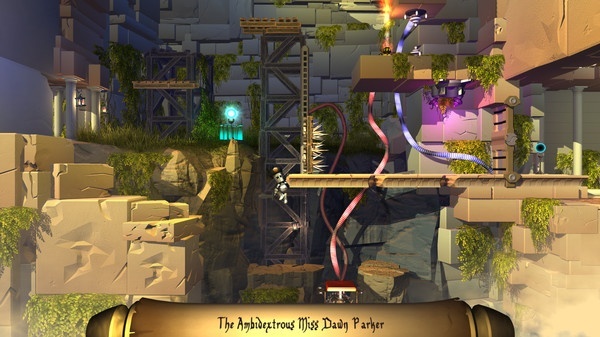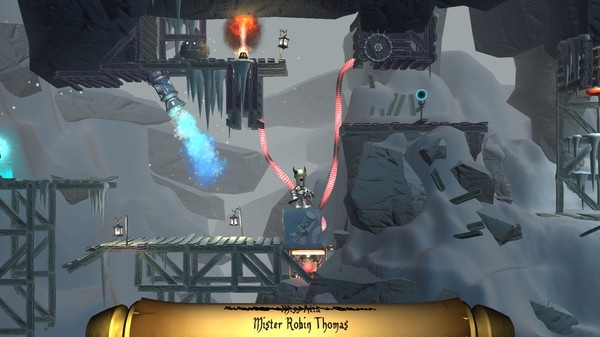Life Goes On: Done to Death (PC) Review
By Jordan Hurst  23.08.2016
23.08.2016

Life Goes On is one of those titles that, upon learning about it, game designers universally wonder, "Why didn't I think of that?" Originally released in 2014, the game stumbled onto a cleverly simple, possibility-filled concept: using the player's own dead bodies from previous runs as puzzle-solving tools. The creators already squeezed a sizeable amount of content out of this mechanic, but they've recently released Done to Death, a huge update that adds around 20 new levels, new applications of the core mechanic, and a genuine final boss fight, plus other, smaller features. It's the best version of an already solid game, and players both new and old should definitely give it a look.
One of the remarkable things about the base game was how familiar it felt, despite being totally unique. It was like the developers saw the "replay all your deaths at once" feature of Super Meat Boy and combined it with the strangely common "clone" mechanic of many puzzle-platformers, creating the equivalent of comfort food for fans of the genre. In this case, though, feeling "comfortable" is not the same as feeling "safe." You don't concoct ideas like using impaled knights as a ladder by circling around in proven territory, which leads to the other remarkable thing about Life Goes On: that it was made so holistic and functional essentially on the first try.

There's a strange instinct when playing a game like this to try and see how far its rules will bend before breaking. The answer here is "really freaking far." Every time it appears you've found an unwinnable scenario or an area you weren't intended to explore, the game reveals a contingency solution to keep you on track. Maybe that sounds like the ever-maligned practice of railroading, but it's a favourable quality in a puzzle game, where sequence breaking would totally defeat the purpose. From such a gameplay perspective, the level design is practically flawless, with each piece continuing to fit together even as they get more and more complex. It is decidedly inorganic, however - no explanation or joke is made for why each level contains an elaborate contraption of flamethrowers and conveyor belts, which feels like a missed comedic opportunity.
Otherwise, the sense of humour on display is strong. There's sharp writing to be found between levels, but this is also a rare comedy game where the gameplay itself is funny. The basic mechanics are so cartoonishly morbid as to elicit a few chuckles before the game even starts, but it keeps going from there, introducing more and more ridiculous uses for the corpses of fallen knights. By the end of the game, players will have connected electrical circuits using their precursors' limp bodies, launched them across rooms using magnets, and frozen them in order to ride the resulting blocks of ice across chasms. Even the game's equivalent of collectibles incorporates this theme, as "collecting" each involves feeding a knight to a toothy ball of fur named Jeff.

Finally, the humour is capped off with an amazing playable credits sequence. Done to Death now leads into this with the most appropriate final boss possible, which, in addition to having some clever ideas of its own, makes for a better conclusion than the base game, which just kind of jumped into the credits without any segue. It does, however, make the previous three areas that didn't have such climaxes now feel incomplete. The two primary gameplay features added in the update are portals that teleport objects to the last checkpoint, and the ability to zombify knights using special machines. The portals are an excellent inclusion, but while the zombies are functional and fit with the other mechanics, the nuances of manipulating them can be somewhat frustrating, and their constant groaning gets annoying quickly, so it's a pretty even trade-off.

Similarly, the game's largest problem is that it frequently requires precision without providing the tools necessary to achieve it. Most of this is caused by its overreliance on a physics engine rather than pre-programmed movements. Organic physics is a great feature, but it's often too unruly to function comfortably as a core mechanic. The fireballs and Koopa shells of Super Mario Bros. would be much more exasperating if they bounced around realistically (i.e. slowly and unreliably), but that's exactly how interactive objects work in Life Goes On. The knights' expressive animation, which is otherwise adept at endearing them to the audience, also contributes to this flaw, as it can make it difficult to discern their hitboxes during platforming segments.
There are little imperfections elsewhere, as well. For example, despite the developers' best efforts, it's often difficult to tell which switches will do what without testing them. This says less about the art design, however, and more about how absurdly complex the later puzzles get. On that note, there's a sense of going through the motions on some of the larger levels, because several of them are merely repeated processes with additional steps tacked on. Problems like these are arguably balanced by the game's many small merits, though. New mechanics are introduced using smartly constructed tutorials rooted in gameplay, and a faux-epic soundtrack accompanies the action, adding another layer of jest to the experience.

Cubed3 Rating
Very Good - Bronze Award

The irony of this re-release's subtitle is staggering. It's easy to become jaded with the experimental indie scene after seeing so many promising concepts fall flat, but Life Goes On: Done to Death accomplishes the difficult task of being both wonderfully original and fully realised. There's nothing life-changing here, but the healthy mix of personality, accessibility, and challenge makes it pretty much solid from start to finish.

![]() 7/10
7/10
![]() 0
(0 Votes)
0
(0 Votes)
 Out now
Out now  Out now
Out now  Out now
Out now  Out now
Out now Comments
Comments are currently disabled

 Sign In
Sign In Game Details
Game Details Subscribe to this topic
Subscribe to this topic Features
Features







 Top
Top

